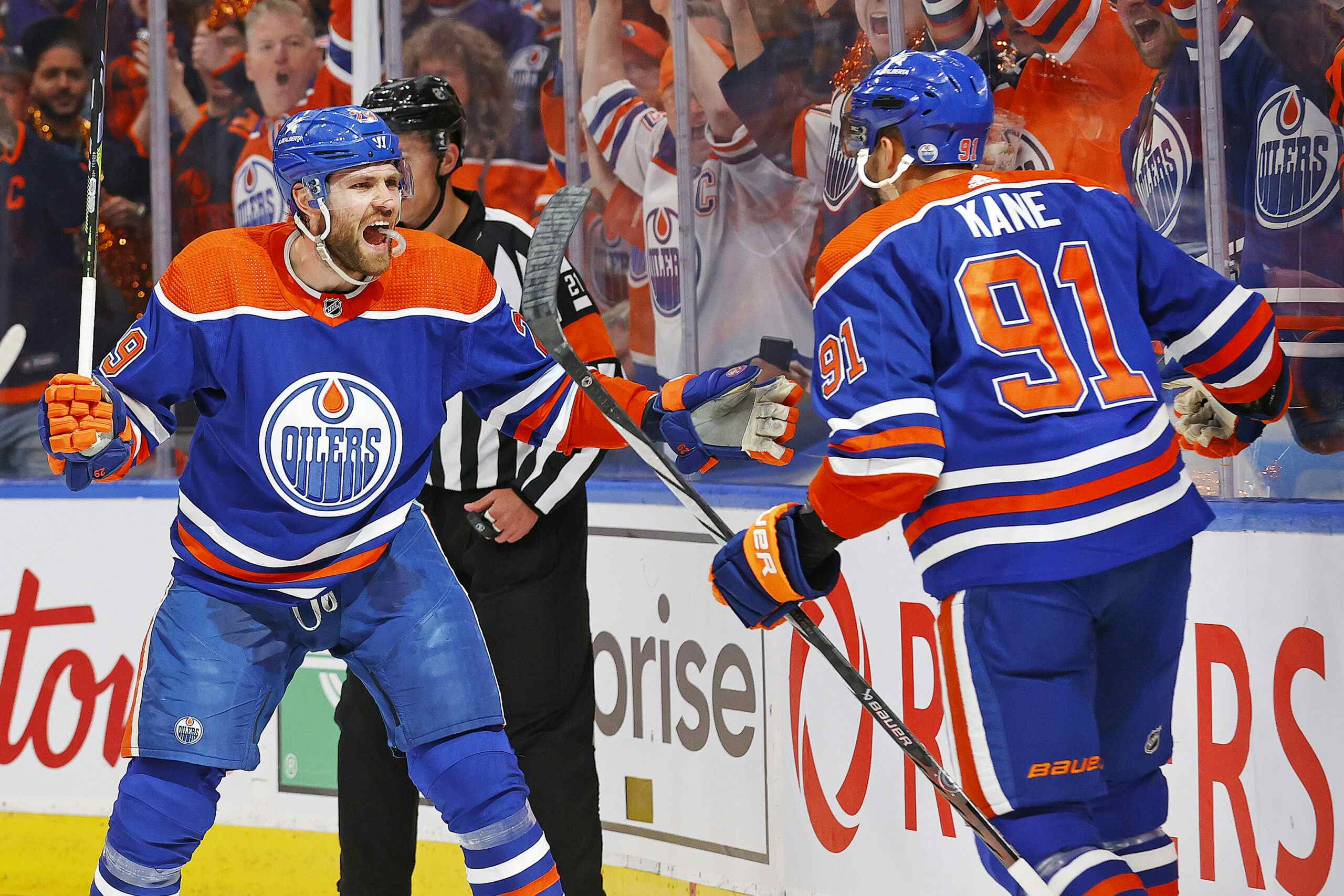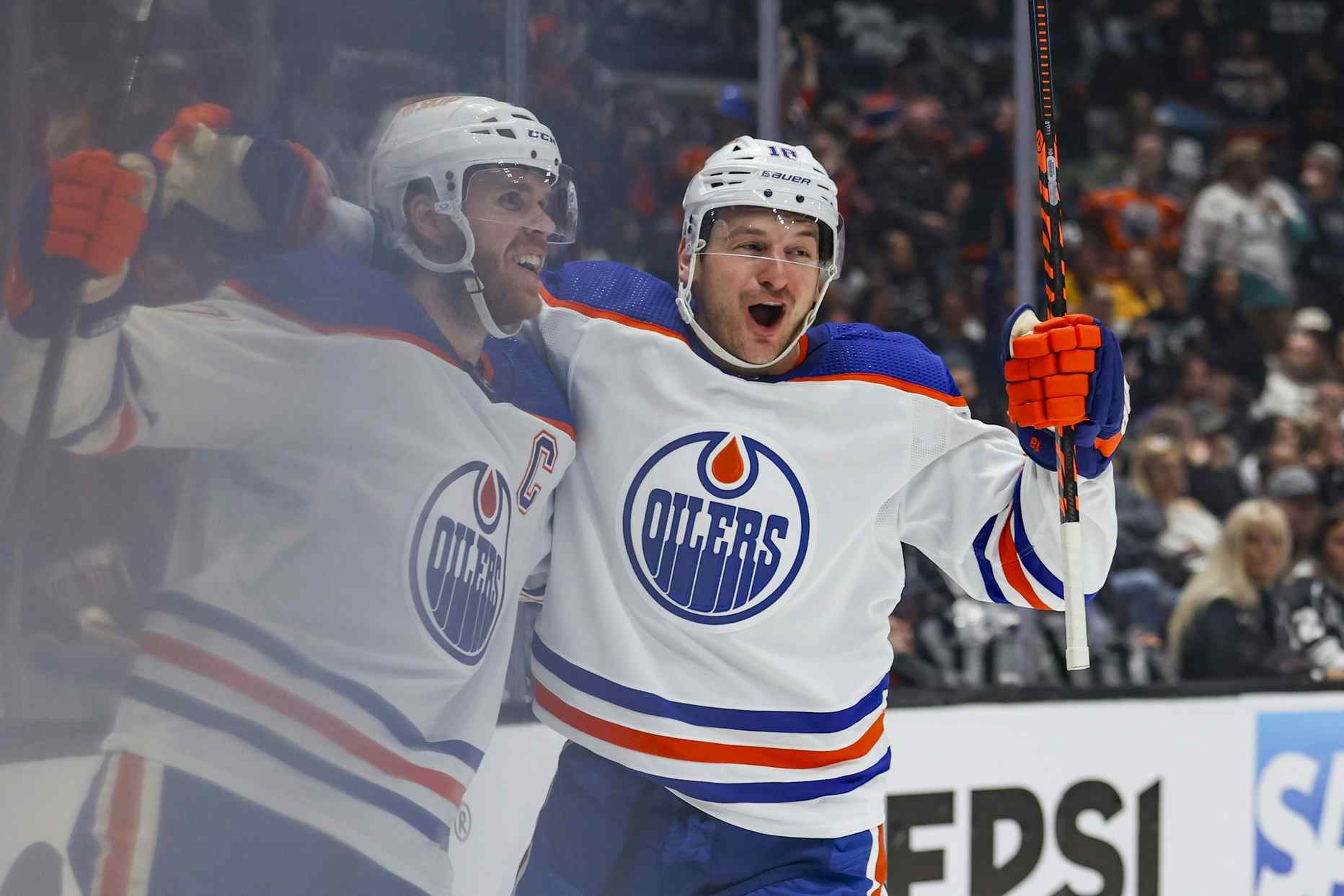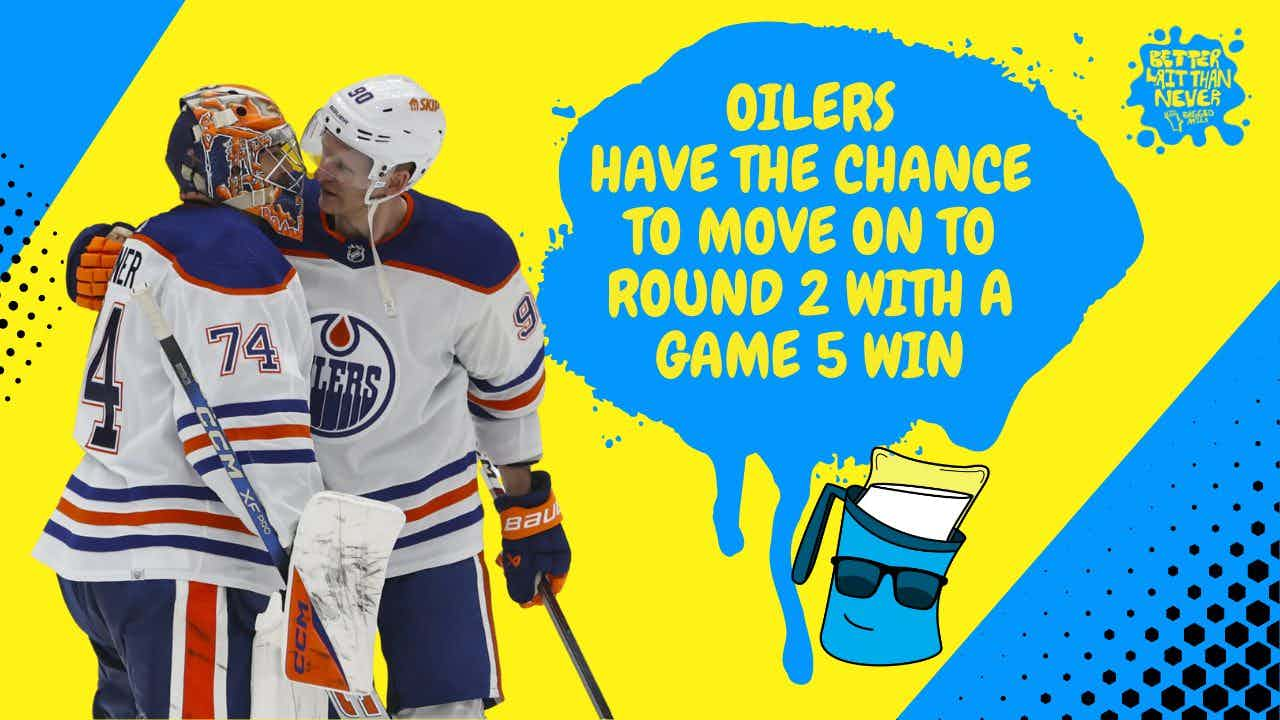Line Matchups Vs. The Senators

Let’s review how Craig MacTavish deployed his forward lines last night.
Here are the Oilers lines for last night, ranked by TOI. The number in brackets is the number of minutes of even-strength ice-time each player recieved:
Kotalik (15.5) – Horcoff (14.7) – Hemsky (15.3)
O’Sullivan (13.8) – Gagner (14.2) – Pouliot (13.6)
Penner (12.8) – Cogliano (14.2) – Pisani (14.5)
Jacques (9.8) – Brodziak (10.2) – Stortini (9.7)
O’Sullivan (13.8) – Gagner (14.2) – Pouliot (13.6)
Penner (12.8) – Cogliano (14.2) – Pisani (14.5)
Jacques (9.8) – Brodziak (10.2) – Stortini (9.7)
As we can see, there’s very little difference between being a third line player and being a second line player in terms of total ice-time. This should be unsurprising; most coaches run their lines that way. Let’s rank these lines by their TOI against Ottawa’s top line of Spezza, Alfredsson, and Heatley:
Kotalik – Horcoff – Hemsky: 11.2 minutes. This means that 74% of their total ice-time was against the best opposition. It’s a classic example of the power-vs.-power matchup.
O’Sullivan – Gagner – Pouliot: 3.6 minutes. This means that 26% of their total ice-time came against the Senator’s top line. The bulk of their minutes (49%) came against the line of Comrie, Kelly and Peter Regin. Some of those minutes came as Horcoff and Gagner switched places for a few shifts.
Penner – Cogliano – Pisani: 2.7 minutes. 19% of the time, this line matched up against the Spezza line. The bulk of their ice-time (71%) came against Fisher, Foligno, and Shannon – in other words, against the Senators second-best line. Tonight, there wasn’t much difference in the quality of matchup for the Oilers’ second and third lines.
Jacques – Brodziak – Stortini: .5 minutes. Less than 5% of the time, this line played the Spezza line. Unlike in previous games, MacTavish refused to risk these guys against the best opponents, and given how costly it’s been in the past it’s about time he finally sheltered them properly. They played two-thirds of their ice-time against Ruutu, Winchester, and Donovan.
The fourth line had a decent night by the numbers, out-chancing their opposition and showing up even on the shot clock (albeit with a negative Corsi, a result of blocking four shots). The second line of O’Sullivan, Gagner and Pouliot managed a goal and even though they also saw one scored against them, they out-chanced their opponents as a whole and outshot them as well.
For the record, here are the shot attempts (missed, blocked and made shots) for and against for each Oilers forward:
Gagner: 16F/13A = +3
O’Sullivan: 16F/14A = +2
Pouliot: 14F/13A = +1
Penner: 11/10 = +1
Jacques: 5F/9A = -4
Hemsky: 9F/13A = -4
Pisani: 11F/16A = -5
Stortini: 4F/10A = -6
Cogliano: 10F/16A = -6
Brodziak: 6F/14A = -8
Kotalik: 8F/16A = -8
Horcoff: 7F/16A = -9
O’Sullivan: 16F/14A = +2
Pouliot: 14F/13A = +1
Penner: 11/10 = +1
Jacques: 5F/9A = -4
Hemsky: 9F/13A = -4
Pisani: 11F/16A = -5
Stortini: 4F/10A = -6
Cogliano: 10F/16A = -6
Brodziak: 6F/14A = -8
Kotalik: 8F/16A = -8
Horcoff: 7F/16A = -9
I think it’s fair to say that the first line had a bad night by any measure. The shot-clock is misleading for the fourth line, as Jacques and Stortini were on the ice for 4 blocked shots for and none against, while Brodziak was on ice for six blocks for and none against. Penner tracks surprisingly well by this measure, as does the second line.
This is not to make excuses for Horcoff or Hemsky, but I very much doubt that Kotalik is a long-term fit on that line. Lindy Ruff didn’t use him against top opposition in Buffalo, and his even-strength scoring has been bad for years now.
Recent articles from Jonathan Willis





